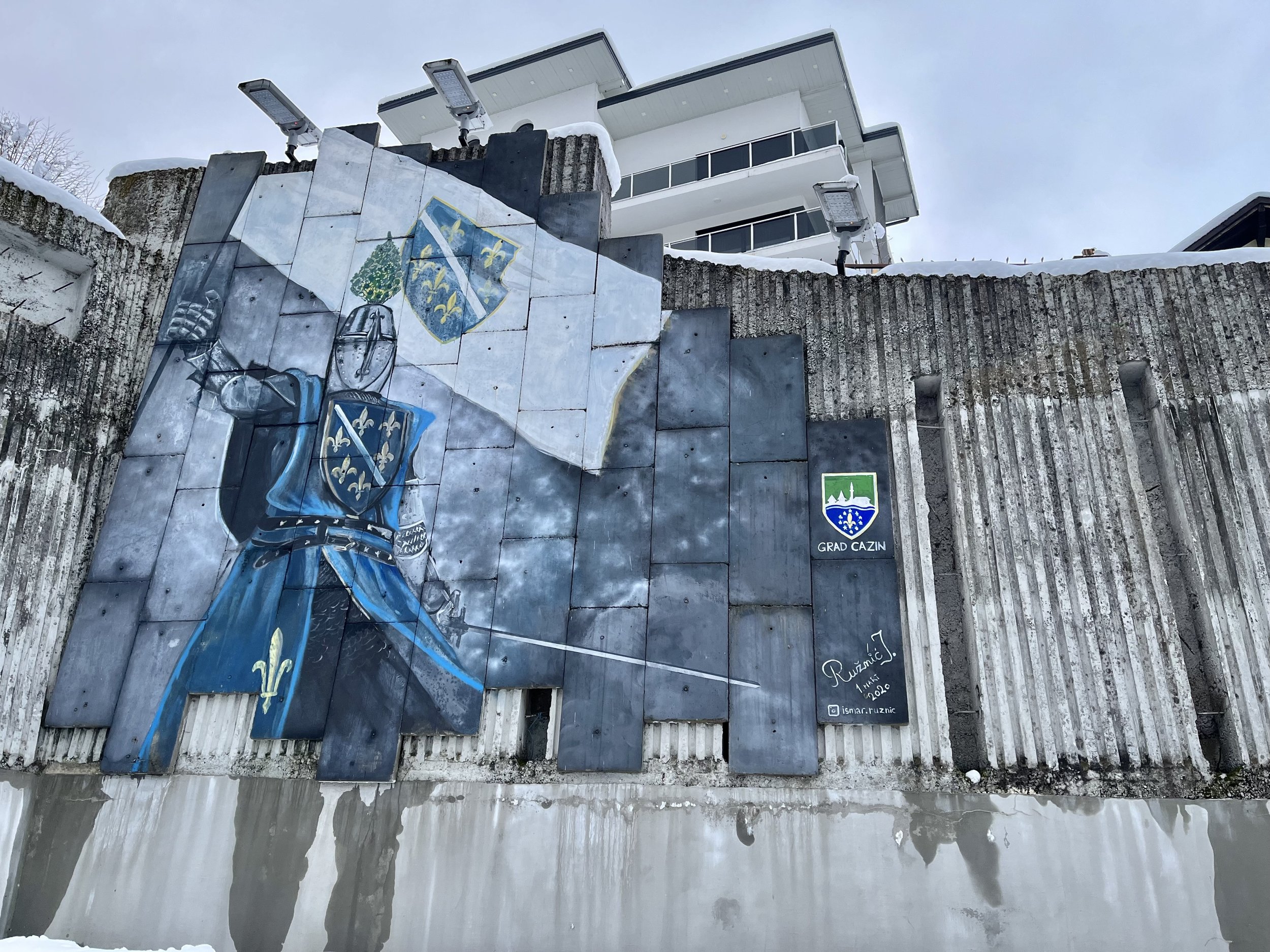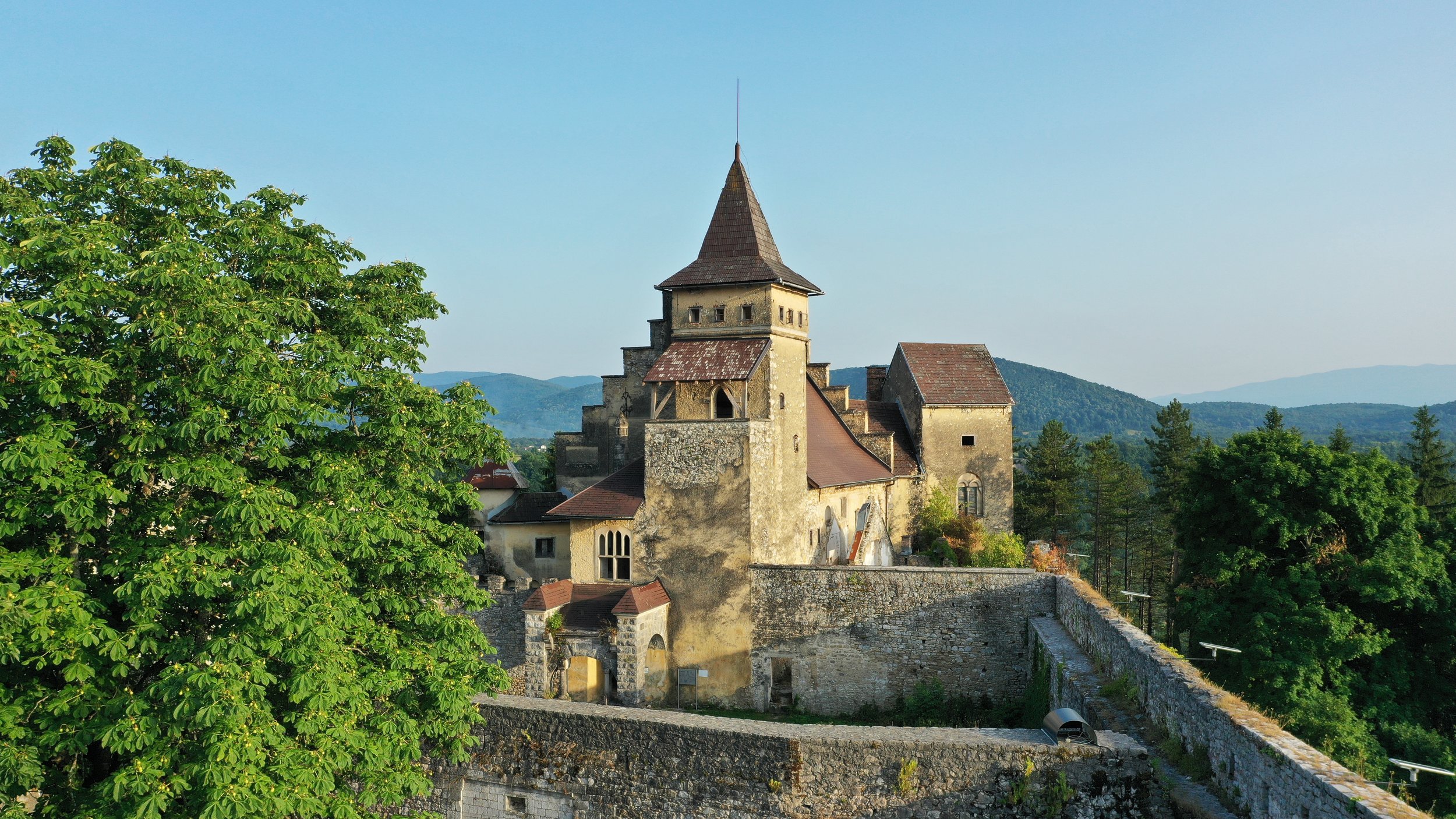Cazin // As We Get Closer, the Room Will Get Smaller
© John Bills
Until 2008, there was still an open sewer in Cazin.
Now, I’m putting faith in you here, dear reader. I’m trusting that you won’t skim-read, that you won’t simply look at the beginning of an article and decide you know all there is to know about it. Don’t discover that Cazin still had an open sewer in 2008 and immediately jump to conclusions. Those conclusions would be incorrect.
Cazin is a city defined by progress, the very concept of progress. It has to be. Cazin today and Cazin from 20 years ago are very different places, but the Cazin of today doesn’t exist without the Cazin of 20 years ago. We become who we are because of who we were.
I travelled to Cazin from Bosanska Krupa by taxi, a fact that negates my claims of progress. 30km separate the two towns, but the bus connections are poor. As snow enveloped Bosanska Krupa, I was faced with a long wait for an evening bus or jumping in a taxi and getting the journey over with. I chose the latter and sat through 30 minutes of an extremely loud driver in the process. Welcome to Bosnia and Herzegovina.
© John Bills
Being relatively underdeveloped for the majority of its history, written records aren’t plentiful for Cazin’s history. The name? The assumption is that it was informed by the Roman word casino, and no, that doesn’t mean slot machines and neon lights. The Romans were in charge of these parts, but the downfall of that famous empire led to the usual suspects taking turns with Cazin.
Fast forward to the 16th century, and Cazin was one of many towns listed under the control of the Diocese of Knin. The medieval fortress was the centrepiece, but eagle-eyed history boffins will see what is coming. This is Bosnia and Herzegovina, we’re talking about the 16th century. The Ottomans can’t be far away, right? Right. The fortress was conquered in July 1576. It changed hands a couple of times in 1577 before the Ottomans set up shop, strengthening the fortifications and prepping for the long run. Cazin was a border town, an important spot, but the 1699 Treaty of Karlowitz ended that. The occasional uprising occurred, but the history books are relatively empty for the next couple of centuries.
© John Bills
We wandered up to the fortress, navigating the snow and ice like a band of veterans. Conquering a place like this in winter must have been some heck of a task. I could never put myself in the boots of a 16th-century soldier, but looking up at a fortress in the snow must have been a grim experience. You expect me to take that? In this weather? Hard pass, thanks.
But this is the 21st century, and the only struggle is cardio.
In the 21st century, the mosque inside the fortress is the real charmer. It was being renovated when we visited, but this 16th-century construction contains enough history in its walls to outlast upgrades and repairs. Progress means strengthening, but the point is to build on ideas that work, not replace them.
© John Bills
Building on ideas that work is Cazin’s thing. This is an agricultural area, it has always been an agricultural area, and the farms of today are looking to the past for inspiration without ignoring the benefits of 21st-century living. There are more than 3,500 farms in the vicinity of Cazin today, and the city works closely with producers. Cazin produces more milk than anywhere else in Bosnia and Herzegovina. The Cazin Beekeepers Association conjures up more than 45 tones of chestnut, meadow and other kinds of honey annually.
Well, the bees do, but you get the point.
All of which makes it more than a little curious that the great tourist attraction of Cazin is a castle built by a wealthy Austrian. Of course, Luther von Berk didn’t build Ostrožac with his bare hands, the grunt was provided by local labour, but the remains of the Berks family home are one of Bosnia’s most significant sights. There are many old castles in Bosnia and Herzegovina, but few are as aesthetically enveloping as Ostrožac.
© Sadmir Mustafic // Shutterstock.com
But the central event in the history of Cazin isn’t about rich old men. It is about pride, rebellion, autonomy and an inherent resistance that can only be developed in the countryside on the borders. Many cities in Bosnia and Herzegovina like to parrot the ‘East meets West’ cliche, but few have the history to back it up like Cazin. This was literally, quite literally, the border between east and west. For a long, long time.
So, that makes for some hardy people. When the post-war Yugoslav government was still trying to kowtow to the Soviets, collectivisation was introduced. This wasn’t the most popular of policies, as 75% of Yugoslavia’s population was still tied to agriculture and farming. World War II did a real number on agriculture, with undernourished livestock and depleted resources, but Tito wasn’t interested. Give more than you have, or face the consequences.
Most farmers across Yugoslavia fell in line, but the people of Cazin don’t fall under the usual brackets. They hadn’t given their lives in the fight against fascism just to be bullied by more repression. A plan was hatched. On May 6, 1950, the peasants of Cazin and its surroundings rose up against the government, an armed rebellion that was predictably crushed with brutality. The leaders of the rebellion were executed by firing squad, with others sent to labour camps or relocated. It was the only armed uprising of its kind in post-WWII Yugoslavia.
The point? That is for another time, but the people of Cazin aren’t the type to take things lying down, as the saying goes. The Cazin Rebellion of 1950 was about justice, about what is right. That mentality still exists today in a delightfully friendly town that is aware of what it has and works hard to celebrate it. Is it perfect? No, but it is honest.
After a brief nap, I walked into town for an event at the cultural centre, a celebration of Bosnia and Herzegovina’s independence day. It was cold, and the snow made walking difficult, but who am I to complain? Try a little harder every day, and who knows what you can achieve. Life is about making an effort. Sometimes those efforts are token, but a token effort is worth more than no effort.




